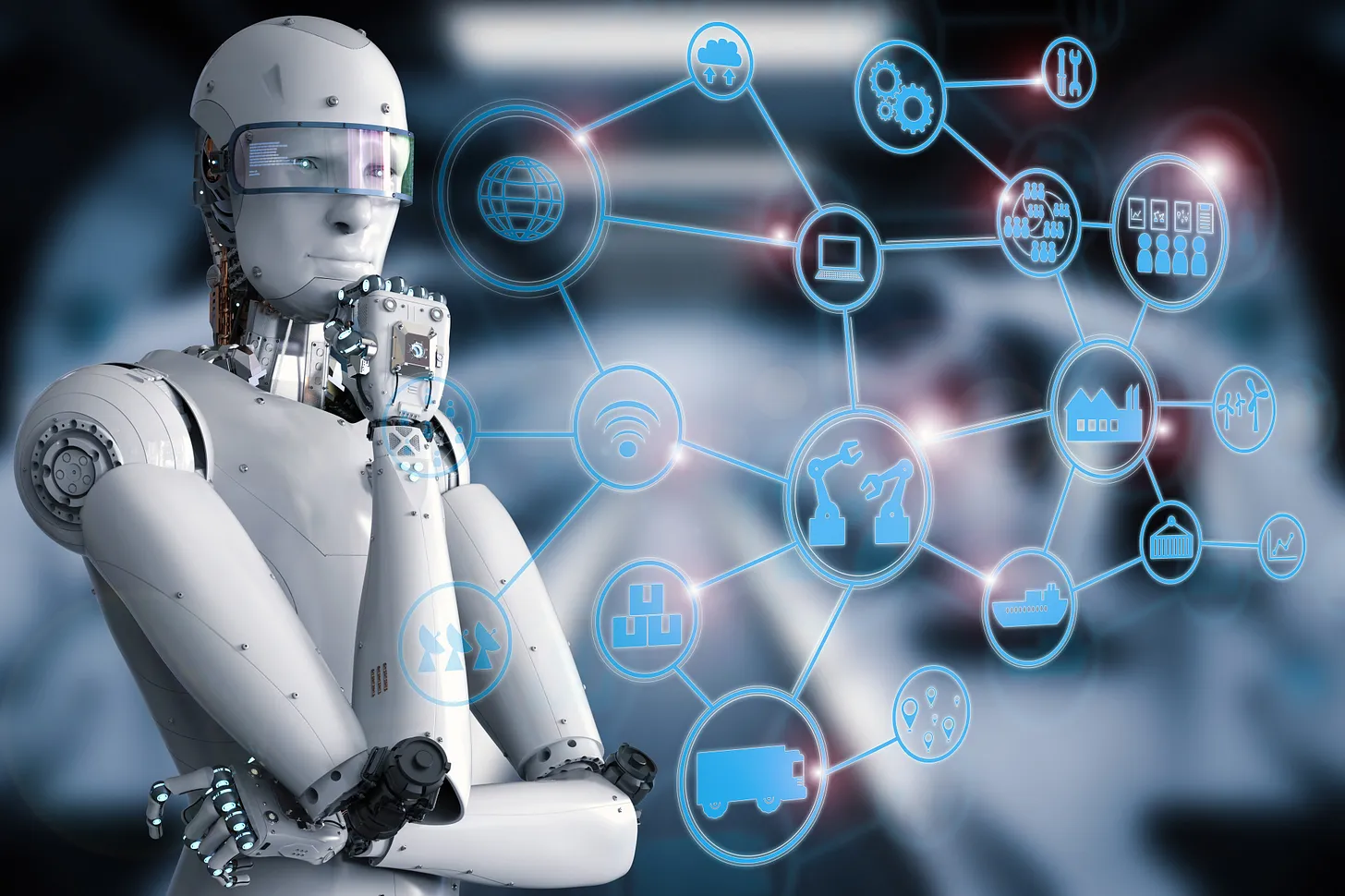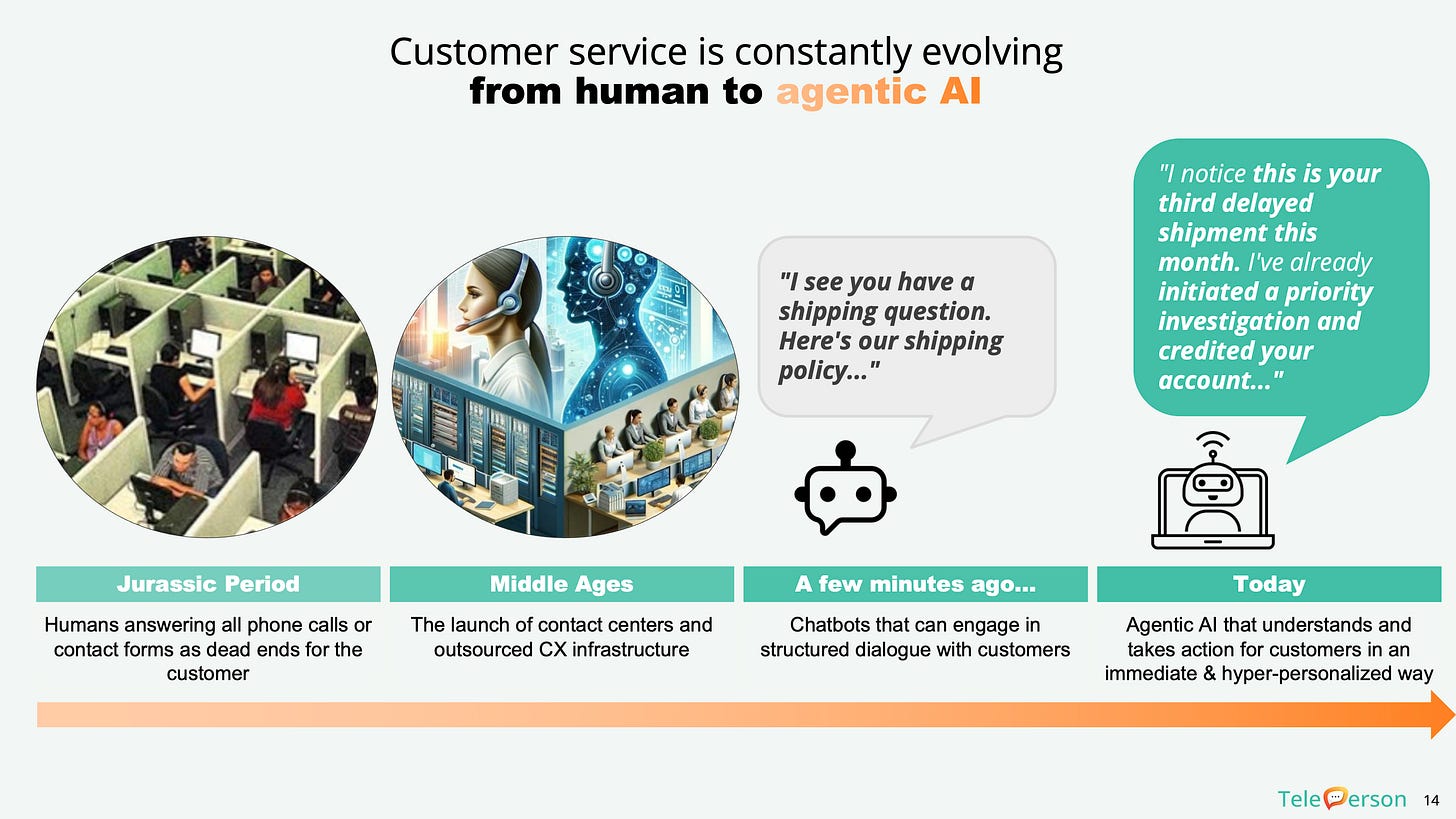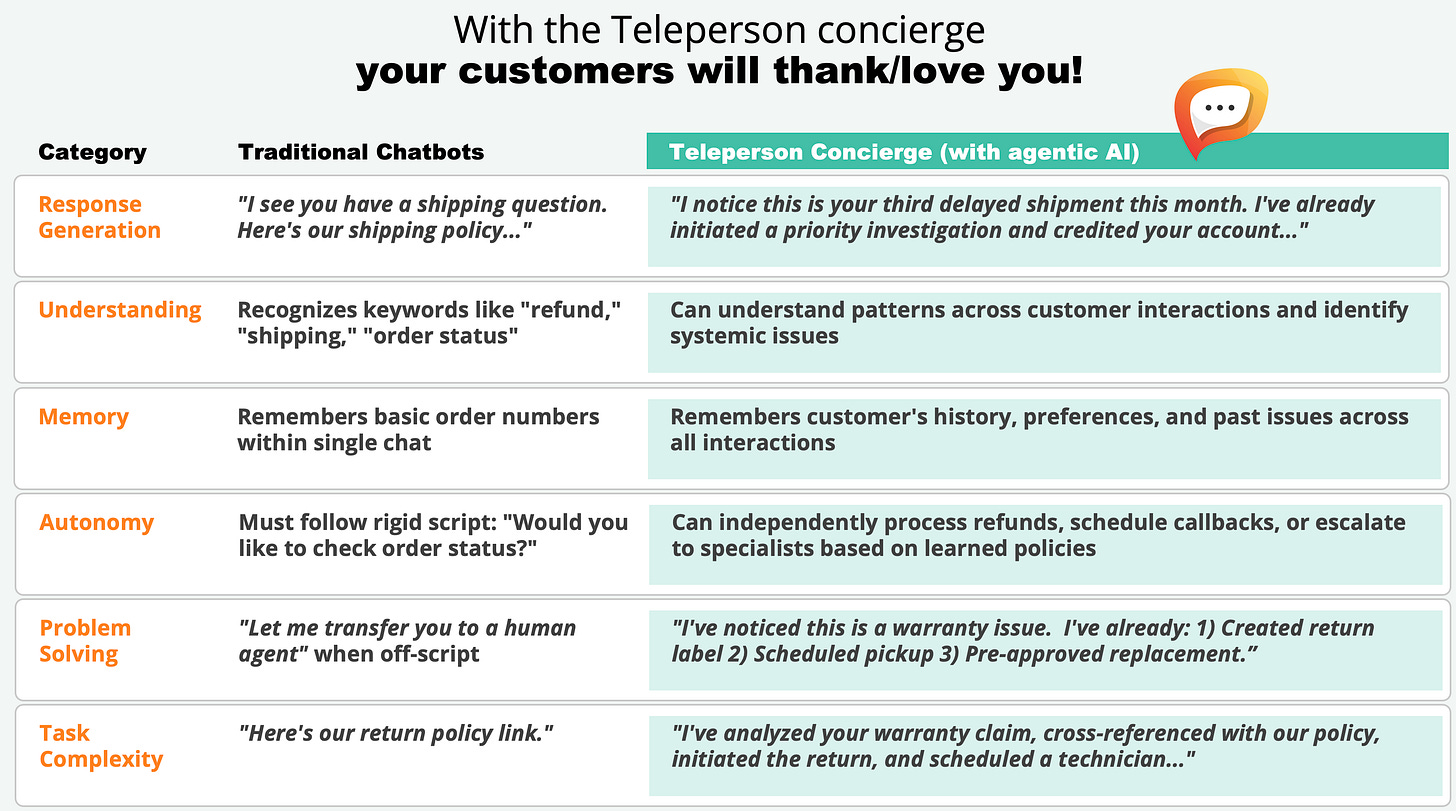The Future of Customer Service: How Vertical AI Agents Are Changing the Game
If you haven’t heard about vertical AI agents, keep...
Check out our latest update on our consumer platform here!
Published on 6 Feb 2025
We have a slide in our sales deck that plots out four key stages in customer service infrastructure, starting with...

We have a slide in our sales deck that plots out four key stages in customer service infrastructure, starting with the “Jurassic period” when humans answered phones as calls come in, to the “Middle Ages”, with the proliferation of contact centers and growth of outsourced CX, to “a few minutes ago”, with the rise of the humble chatbot to “Today”, with the rise of agentic AI.

For those not immersed in this head-spinningly evolving area, I think of generative as the ability to repurpose existing information—say, scrapped from a website—and agentic AI to be action-based and outcome-oriented. OpenAI’s launch of its Operator represents yet another gamechanging event for the customer service industry where tasks—from mundade to complex—makes up the vast majority of customer service requests across multiple industries. Today, any company with customers—i.e., every company on the planet—needs to think agentic, if not implement agentic AI solutions to maintain and further their market share.
At Teleperson we’re focusing on staying at the cutting-edge of technologies that will impact customer engagement today and tomorrow. We’re young, hungry, and foolish and while we’re still in the building phase for our consumer solution—a unified and enhanced customer service experience across 100% of the companies and brands you shop from—we’re working furiously to design as we build as we launch. The rapid transformation from AI models in theory to practice to product has become a solid requirement for anyone playing the AI game; those who build with the customer experience grounded at the center of any build will win.
We’re today evolving from a unified customer service hub into an intelligent ecosystem where AI agents work proactively to optimize every customer interaction and business insight. These agents will anticipate customer needs, automate routine tasks, and unlock deeper value from our vast repository of cross-business customer behavior data.
As we continue revolutionizing how consumers manage their business relationships, AI agents present an unprecedented opportunity to enhance both sides of our marketplace. This could include predictive support agents, who can anticipates potential issues based on one’s behavior patterns, initiates preemptive support interventions, or even provide real-time translation and cultural context. It could mean a personal shopping assistant, analyzing customer purchase history across all connected businesses, proactively identifies opportunities for returns, exchanges, or upgrades, providing advanced natural language capabilities for nuanced customer interactions.
Being a dual-sided platform, for companies we can offer a business Intelligence synthesizer agent, which aggregates and analyzes cross-business customer data, identifies emerging market trends and consumer behavior patterns, or generates actionable competitive intelligence. Or, say, a revenue optimization agent which processes visual and textual data to identify upsell opportunities, analyzes competitor pricing and product offerings or generates targeted promotional strategies based on customer segments.
In regards to our voice-based Concierge (voice becoming increasingly table stakes for agent communications), our multi-agent orchestration could mean for customers a more personalized and proactive service, faster resolution times through automated processes, seamless experience across all business interaction and better product recommendations and deals. For companies, this could be increased revenue through optimized customer interactions, deeper insights into customer behavior and preferences, reduced customer service costs through automation, or competitive advantage through predictive analytics
At its core, voice AI begins with speech recognition, but this fundamental step is already fraught with challenges. Your AI needs to understand:
A customer saying “I’d like to dispute a charge from March 15th” seems simple enough to human ears, but teaching AI to consistently parse such statements across countless variations requires sophisticated acoustic modeling and natural language processing.
The Teleperson Concierge will be agentic, however, and can go way beyond simply escalating a customer to a human representative but rather support the transaction directly. Below are key differences between your 2024 gen AI agent to one found today.

Our Concierge will be able to:
Our Concierge will be enhanced by the ability to integrate with multiple data sources, whether this is the customer relationship management system of a business on our platform, payment processing platforms (we’re currently leveraging MX to automate the experience of adding all companies & brands shopped from for consumers), booking and reservation systems, or internal knowledge bases and company documentation. Each integration point adds complexity and potential failure points that must be carefully managed.
Beyond technical challenges, we’re designing our Concierge with empathy and customer sentiment in mind. Each user’s Concierge will adapt to the user while maintaining a consistent personality and tone and balancing efficiency with natural conversation flow.
And last our Concierge will be secure, empowered to navigate complex security and compliance requirements. This includes the Concierge’s ability to protecting sensitive customer information, maintain GDPR, HIPAA, or other regulatory compliance and securing voice data transmission and storage
As agentic AI evolves, we’re seeing new challenges and opportunities emerge. We’ll see multi-modal interactions combining voice with visual interfaces, synthesizing various qualitative information rapidly. There will be rapid customer expectations that agentic bots—like our Concierge—will show emotional intelligence and empathy along with more sophisticated natural language understanding. And of course as training data proliferates agentic bots will have better handling of complex, multi-turn conversations along with enhanced personalized capabilities.
Our vision for Agentic CX requires expertise across multiple domains – from natural language processing to system integration to human psychology. Success depends not just on implementing individual components correctly, but on creating a cohesive system that can handle the countless variations and edge cases that arise in real-world customer service scenarios.
As we continue to push the boundaries of a re-defined customer engagement model, the key to success lies in maintaining a balance between technological capability and human-centered design. The goal isn’t to replicate human customer service representatives perfectly, but to create AI systems that can effectively handle routine inquiries while knowing when to seamlessly transition to human agents for more complex situations.
To check out our consumer-sided beta, click here.
